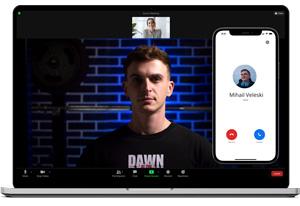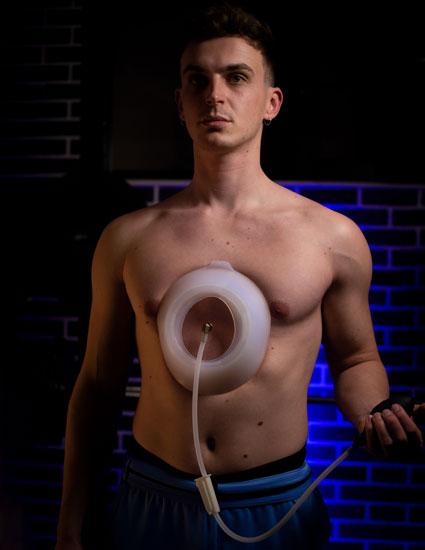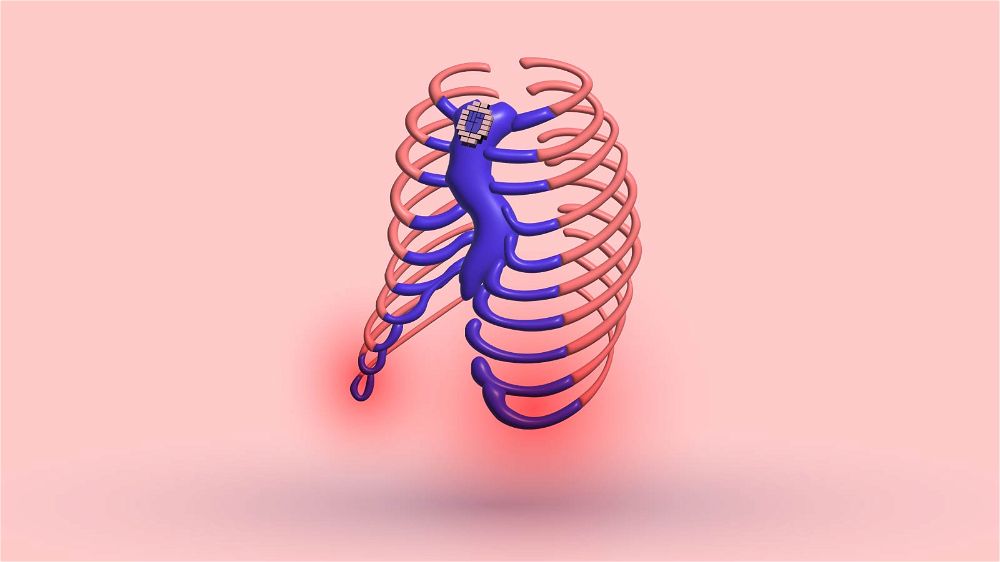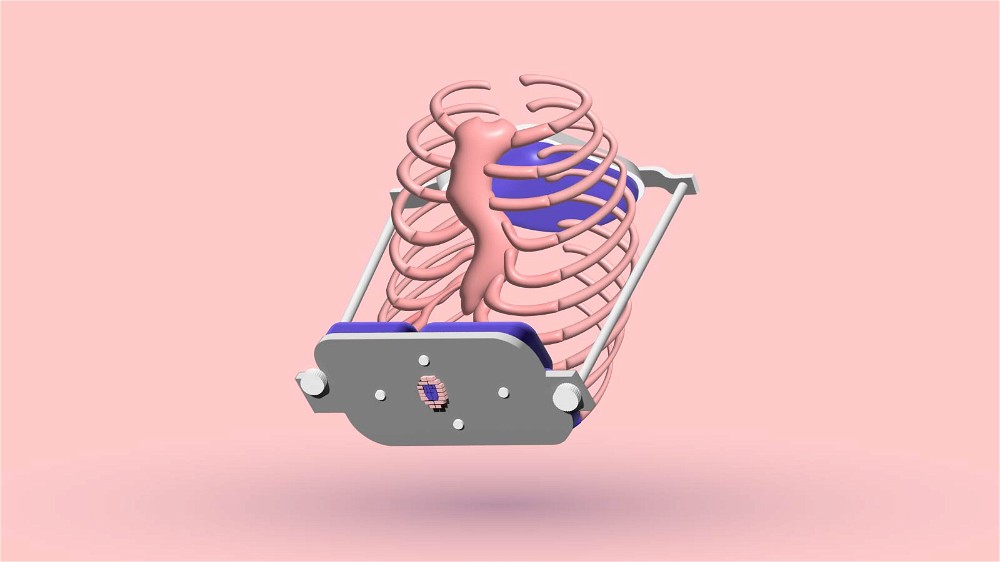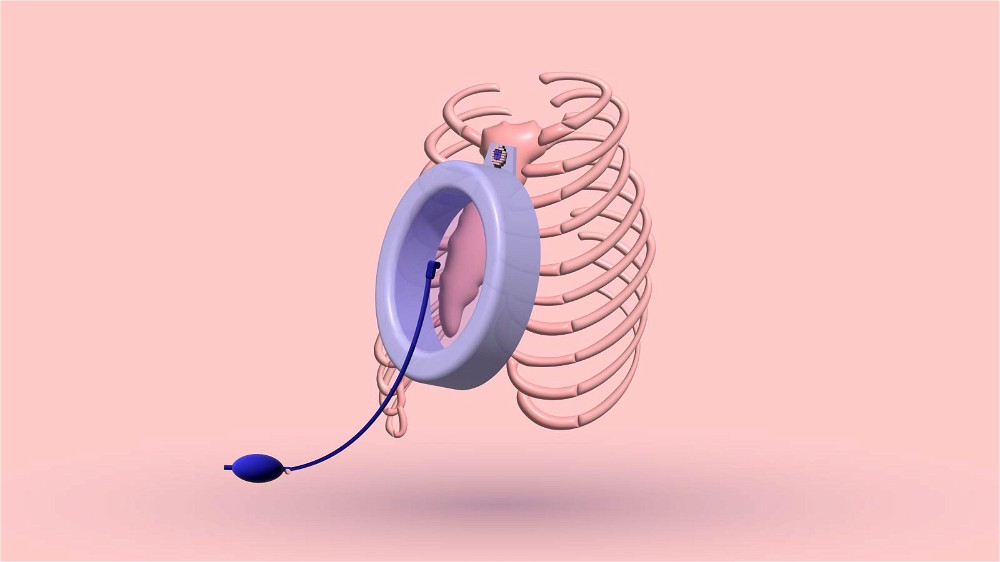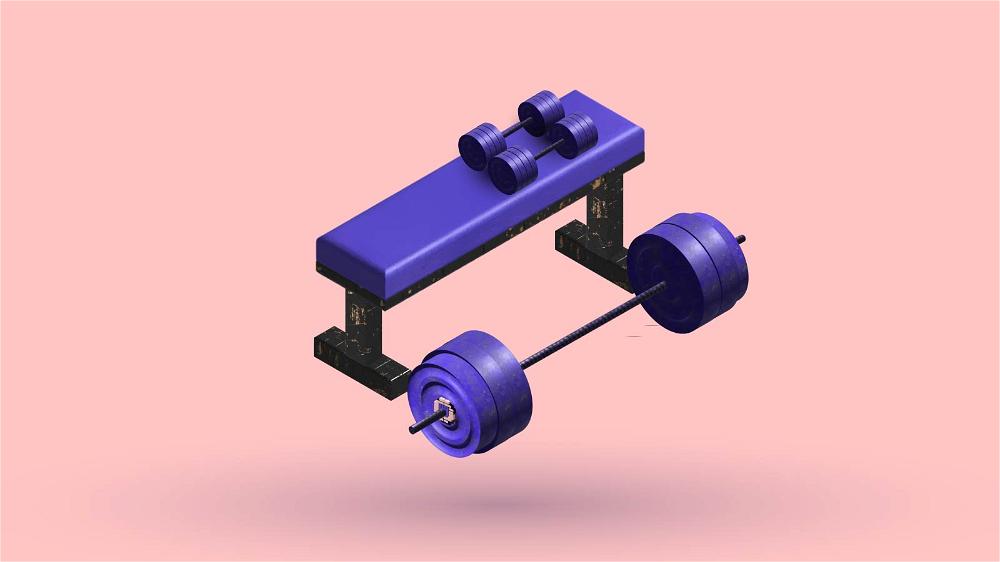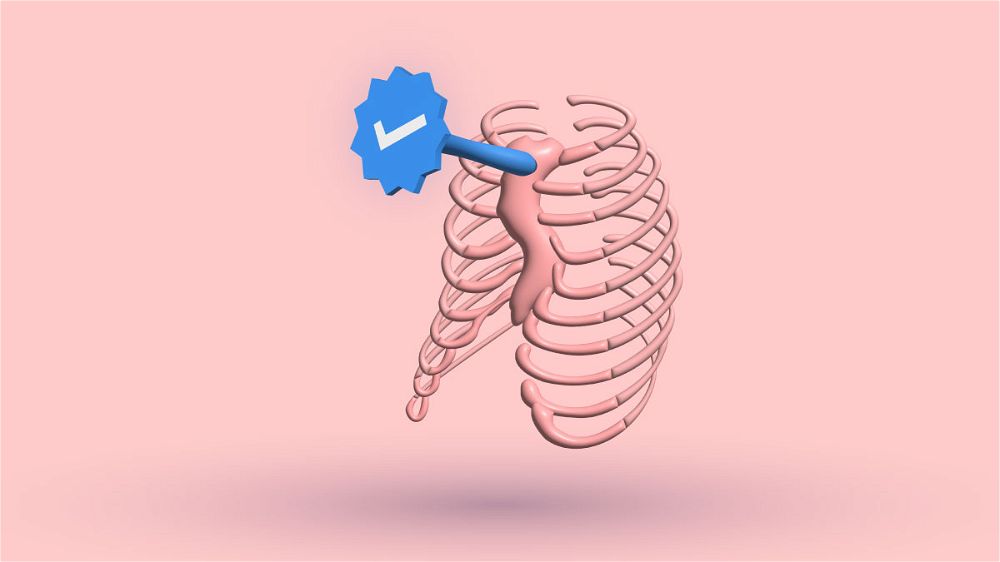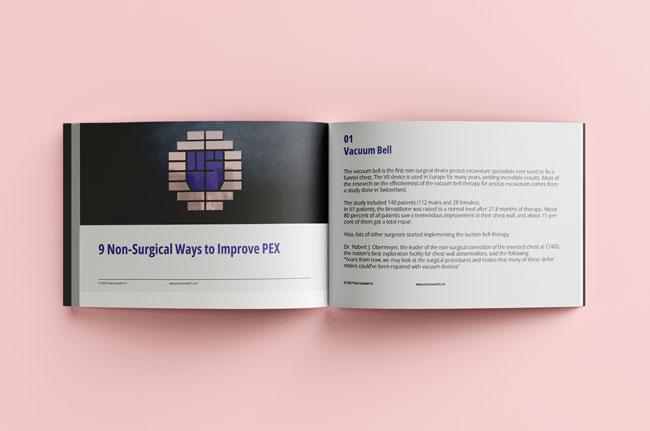Some babies aren't born with pectus excavatum. This makes it much harder for parents to recognize the deformity.
The cavity usually worsens in puberty. Luckily, there can be many symptoms that can be an indicator to seek medical help.
3 Common SYMPTOMS OF PECTUS EXCAVATUM IN KIDS
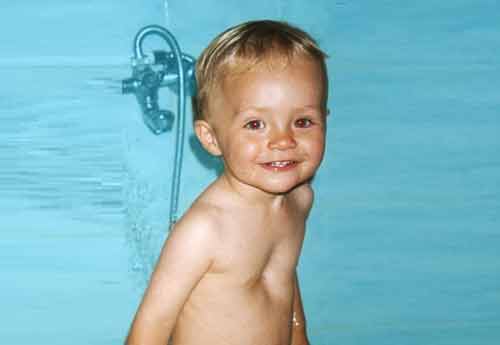
1. CRYING
One of the symptoms may be if your baby is crying very often for no particular reason. If it starts crying when you touch its chest, that can signify a hidden deformity that will worsen in the teenage years.
The crying is closely related to chest bone pain, one of the most common signs of pectus excavatum.
2. COUGHING
Another sign for parents is coughing. A hard push on the breastbone can lead to coughing. Studies have shown that pectus excavatum in babies can also cause respiratory infections.
3. POSTURE PROBLEMS
When kids are young, there are many visible symptoms of deformity. The shoulders are usually pushed forward, and an abnormal thoracic spine curvature is evident.
In many patients, there is a curvature of the spine to the side (scoliosis), which mainly worsens during adolescence. Furthermore, the pressure of the sternum to the heart might also give your kids heart-related symptoms like a fast heartbeat.
HOW TO TREAT SUNKEN CHEST IN KIDS

Suppose you are seeing some of these problems in your baby. In that case, the best way is to find an excellent pediatrician who can help you diagnose pectus excavatum.
3 WAYS TO EXAMINE THE DEFORMITY
According to Seattle Children's Hospital, there are three most common methods to examine deformity.
- CT scan (computed tomography scan).
- Lung function test to check the breathing patterns.
- Ultrasound of the heart (also called an echocardiogram or "echo").
After the deformity is diagnosed, it tends to progress slowly until puberty. On average, 12-14 years of age is the best time to recognize whether the problem needs treatment or not.
Kids with no heart issues or breathing problems can live an entirely healthy life without treatment. When the child is done growing, the sunken chest should not get any worse.
PSYCHOLOGICAL CARE
Regarding treatment, parents should be the best support for their kids. The sunken chest will become visible, which will be hard to hide. That will lead to psychological problems.
Your child can be prone to becoming sad, depressed, and not happy with itself. Guiding your kid with the help of a doctor or a trainer through a proper and focused treatment is the best thing you can do for the kid.
PHYSICAL THERAPY FOR KIDS WITH INVERTED CHEST

When I was diagnosed with pectus excavatum as a teenager, my doctor advised me to start yoga and swimming. These workouts are recommended to anyone, regardless of age.
I suggest you introduce these activities to your kid's life. After the kid progresses in the workouts, they can try more strenuous yoga and swimming strokes.
This will lead to improved posture, rapid muscle mass and strength growth, improved breathing patterns, reduced stress, and improved pectus excavatum deformity.
However, suppose your kid has a problem with tiredness and muscular inflexibility. In that case, there are specially designed exercises with a limited range of motion.
These exercises are straightforward and gentle to the joints. Pediatrics often recommend developmental activities, such as:
- Walking
- Adaptive play
- Water therapy
- Improving circulation around injuries by using heat or cold therapy
- Electrical stimulation
- Massage
- Ultrasound
- Home treatment for pectus excavatum in kids can also include vacuum bell devices
In simple terms, that is a device with a pump that sucks the air out of the device, creating a vacuum that pulls the sunken chest to a normal position.
If kids do this therapy correctly, with time, their chest wall will stay forward on its own, permanently.
SURGICAL CORRECTION OF PECTUS EXCAVATUM IN KIDS
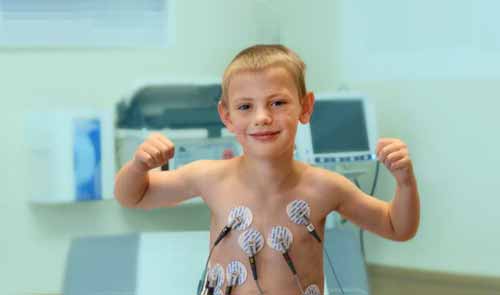
Suppose your child's condition needs surgical help besides home treatment. In that case, you and your doctor can choose surgery as one of the fixing solutions.
HEART ECHO
Before the surgery, your kid needs an Echo of the heart. The purpose of this is to look for valve problems that can be associated with pectus excavatum.
CT SCAN
A chest CT scan is performed to estimate how successful the surgery might be.
ALLERGY TESTING
You will also need to obtain allergy testing to ensure your child does not have a sensitivity to nickel or chromium.
ANESTHESIA
The surgery in children is the same as that in adults. Total anesthesia must be given in these complicated and long-lasting surgeries.
NUTRITION
This means that there is specific food that your kid must eat before the operation. As stated by the Children's Hospital of Pittsburgh, the surgery will take 1 to 6 hours, depending on the method. And after that, your kid must stay at the hospital for better recovery.
TWO TYPES OF OPERATIONS
Two types of surgery are most commonly used:
- Open (or modified) Ravitch procedure
- Nuss procedure. In the open procedure, they place a support system in the chest wall to hold it properly.
The Nuss procedure is less invasive. The surgeon inserts a curved metal bar to push out the sternum and ribs, helping to reshape.
A stabilizer is added to keep it in place. In 3 years, the chest reshapes, and both bars are surgically removed.
WHAT TYPE OF SURGERY IS BETTER FOR OLDER KIDS
Research proved the Nuss procedure is better for older kids over eight years old. The open surgery or the Ravitch procedure is better for younger kids.
Having a steel bar in the chest raises several issues about daily activities. That is why families must be patient and careful.
SURGERIES CAN SOMETIMES BE INEFFECTIVE
There are so many examples of failed operations or failed healing processes. The worst part of these surgeries is the possibility of pectus excavatum recurrence after the procedure.
That often happens, mainly because of:
- Incomplete removal of cartilages
- Rough healing
- Failed fusion of removed cartilage and sternum
- Infections
- Seroma complications
- The early departure of the support devices.
PECTUS BAR DISPLACEMENT IN CHILDREN
Bars that are embedded in the chest can be displaced. If the bar is too long or placed too laterally, it can affect the heart. The heart cannot pump blood efficiently, which will cause new difficulties for the patients.
The Nuss procedure can be very difficult for kids because they should be careful not to displace the Pectus bar during everyday activities.
They must be very cautious, even when walking around big groups of people. Also, they need to be careful about playing contact sports in the process of healing.
Because daily physical activities are minimal, it can cause the weakening of muscle mass.
8 Tips FOR PARENTS
- Be the best motivator and supporter of your child
- Give your child all the patience and care that you have
- You need to know that there is nothing wrong with your kid. These problems are widespread and can be solved.
- Be the best friend to your child, so they can feel free to tell you if they have any self-esteem dilemmas, which are very common with this kind of deformity
- At first, try the most natural way of treatment, which is non-surgical. There are plenty of reasons why non-surgical treatment is excellent.
- Wearing posture braces from a very young age is a perfect way for your kid to develop a proper, sturdy posture, which will ease the process of improving pectus excavatum. If that doesn't help, talk with a doctor, and ask whether surgery would be the best solution
- Find ways to help with the non-surgical treatment option in your household
- Be consistent.

CONCLUSION
Just because there isn’t enough information about this deformity in children doesn’t mean there aren’t enough ways to correct it except for surgery.
You and your child must find ways to fight through this. Finding a good doctor to guide you through this journey is helpful. You must believe in the process of treating pectus excavatum.
When you are done with every medical analysis, and you’re sure about the diagnosis, your kid can start with the proper treatment. If this means that the surgery is the best solution, you must be mindful of recovery.
Furthermore, if the deformity isn’t very severe, there is an opportunity for non-surgical treatment. Go for it without any doubt.
Using orthopedic aids is of great help in the treatment of sunken chest. Doctors recommend this highly, especially for children and teenagers.
5 Sources
- Chest Wall Disorder: Pectus Excavatum (for Parents) - Nemours KidsHealth [Internet]. [cited 2022 Dec 1]. Available from: https://kidshealth.org/en/parents/pectus-excavatum.html
- Pectus Excavatum - Seattle Children’s [Internet]. Seattle Children’s Hospital.
[cited 2022 Dec 1]. Available from: https://www.seattlechildrens.org/conditions/pectus-excavatum/ - Pectus Excavatum Repair Surgery [Internet]. Children's Hospital of Pittsburgh. [cited 2022 Dec 1]. Available from: https://www.chp.edu/our-services/surgery-pediatric/patient-procedures/pectus-excavatum-repair-surgery
- Kim DH, Hwang JJ, Lee MK, Lee DY, Paik HC. Analysis of the Nuss Procedure for
Pectus Excavatum in Different Age Groups. Ann Thorac Surg. 2005
Sep;80(3):1073–7. - Kelly RE, Lawson ML, Paidas CN, Hruban RH. Pectus excavatum in a 112-year autopsy series: anatomic findings and the effect on survival. J Pediatr Surg. 2005
Aug;40(8):1275–8.



